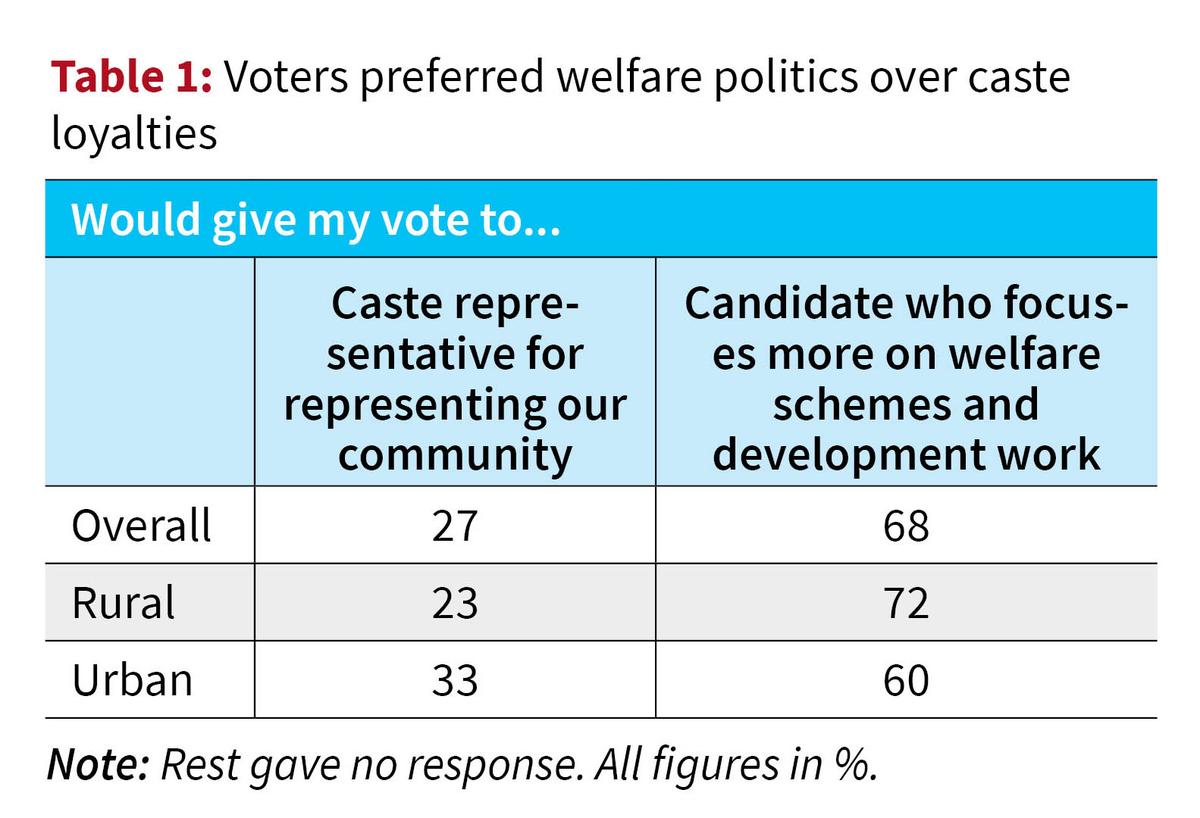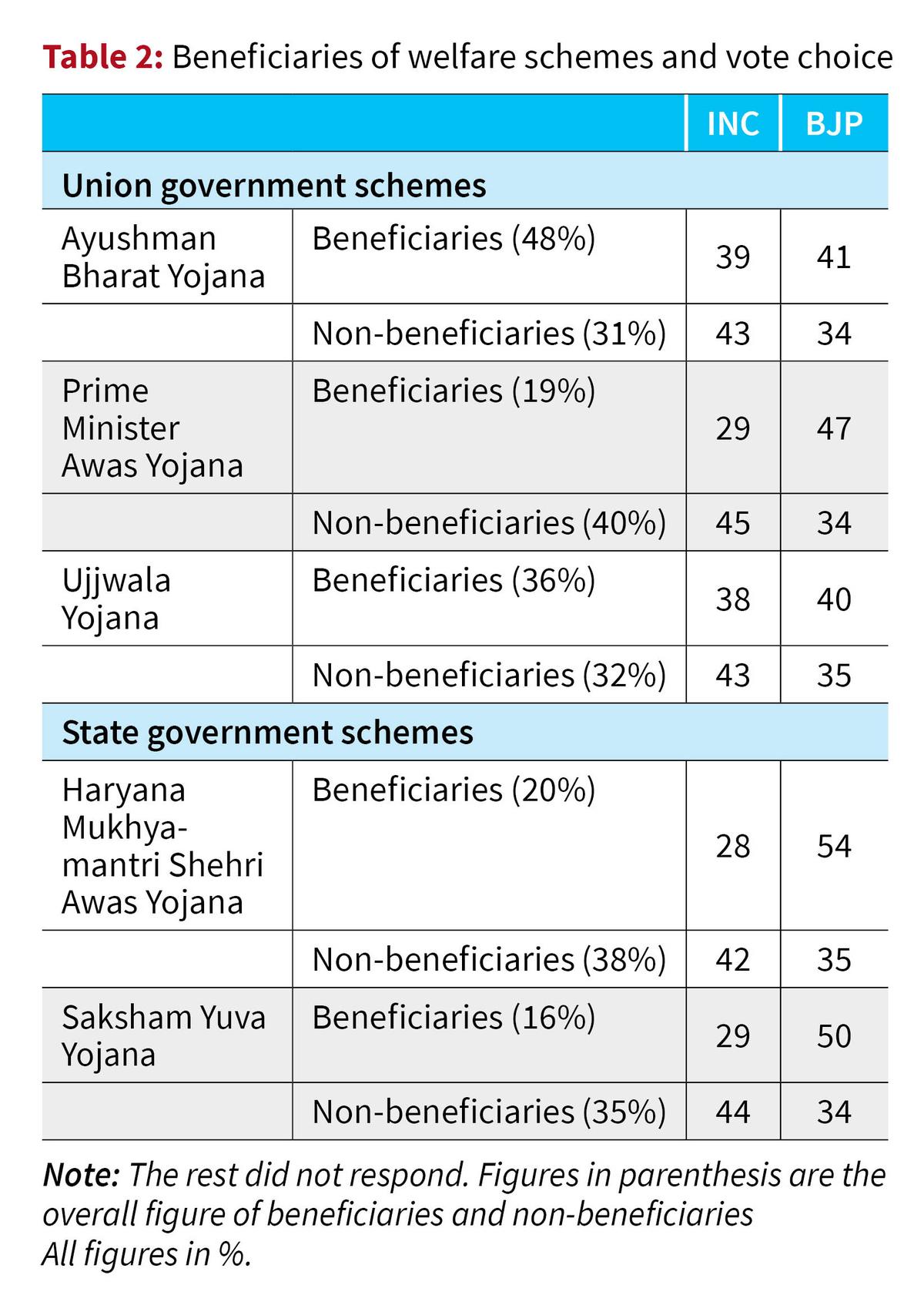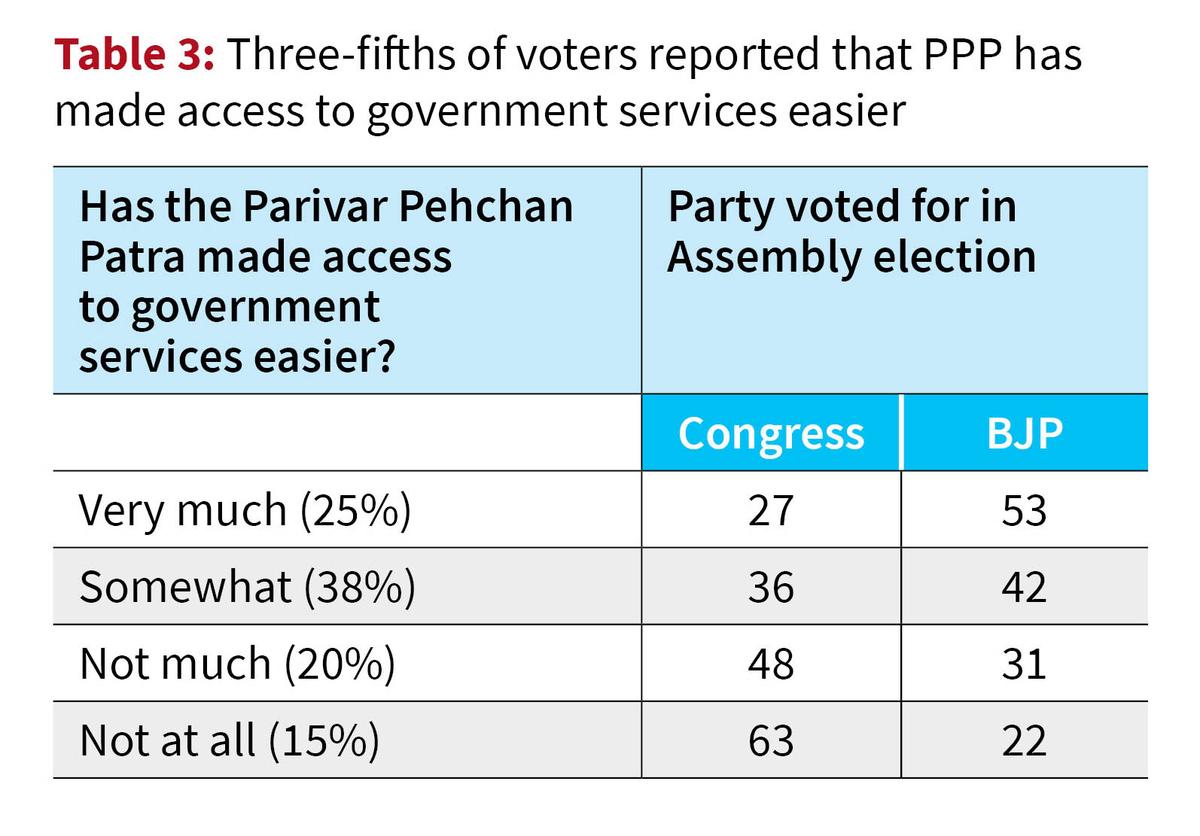[ad_1]

Voters wait in queues to cast their votes for the Haryana Assembly elections, at Gandhi Nagar in Rohtak.
| Photo Credit: ANI
For the Haryana Assembly election, the Bharatiya Janata Party (BJP) made a significant shift in its electoral strategy by announcing a series of popular promises. This marked a departure from the party’s earlier stance, in which it often criticised such tactics when done by other political parties, as being populist and unsustainable. However, in a competitive political environment, especially in a State such as Haryana, where caste politics and rural concerns dominate, the party chose to adopt a welfare-driven approach to attract voters.
To regain voter support after two consecutive terms, the BJP announced several attractive welfare policies just before the election, such as ₹2,000 per month for women, 300 units of free electricity, and promises of two lakh government jobs. These were introduced to address economic grievances exacerbated by rising inflation and unemployment. These announcements were made in quick succession, signalling the party’s intention to cater to rural voters, who often view welfare schemes as crucial for their livelihood.
A CSDS-Lokniti survey in Haryana highlights a significant trend among voters, showing a clear preference for parties that prioritise welfare schemes and development work over those that focus on representing specific caste communities. Across the State, more than two-thirds (68%) of the voters indicated they would support a candidate who emphasises welfare and development initiatives, compared with only one-fourth (27%) who preferred a caste representative. This indicates that a majority of voters were more concerned with tangible benefits and community welfare than with identity-based politics.
This trend is even more pronounced among rural voters, where nearly three in every four (72%) expressed a preference for candidates focusing on welfare schemes, while less than one in every four (23%) favoured caste representation. In urban areas, while a majority still support welfare-focused candidates (60%), there is a slightly higher inclination toward caste-based voting (33%) compared with rural areas. This pattern suggests that welfare politics strongly influences voter behaviour, particularly in rural areas, where development initiatives resonate more with voters than traditional caste loyalties (Table 1).

The survey shows that Union government schemes have had a broader reach compared with those of the State, with more beneficiaries overall. However, aside from Ayushman Bharat (48%) and Ujjwala Yojana (36%), the percentage of people benefiting from other schemes remains relatively low, with approximately one in five voters reporting they received benefits (Table 2).

In fact, just before the election, the government announced that 46 lakh families with an annual income of less than ₹1.80 lakh, who are beneficiaries under the Pradhan Mantri Ujjwala Yojana, would receive gas cylinders for ₹500. The State government also launched a housing scheme for the urban poor, the Haryana Mukhyamantri Shehri Awas Yojana, which benefited 20% of the urban voters. However, other State schemes, such as Saksham Yuva Yojana, which focuses on youth employment, showed lower outreach, with only 16% of the population benefiting from it.
Among the beneficiaries of Ayushman Bharat Yojana and Ujjwala Yojana, the BJP maintained a slight lead over the Congress. This suggests that, even though a large portion of the population benefited from these schemes, it did not translate into a decisive vote in favour of the BJP. For another Union government scheme, the Prime Minister Awas Yojana, the BJP fared better among its beneficiaries. However, the beneficiaries of State government schemes strongly preferred the BJP over the Congress. The non-beneficiaries, on the other hand, strongly favoured Congress (Table 2).
The BJP government also launched the Parivar Pehchan Patra (PPP) scheme, which aimed at streamlining access to government services by creating a unique family identity for households. A remarkable three-fourths (72%) of voters, or their family members, are registered under the PPP scheme. The data suggest that over three-fifths of them believe the PPP has made access to government services easier (combining “very” and “somewhat”). Among those who felt the scheme greatly improved access, more than half (53%) voted for the BJP, indicating that voters who directly benefited from smoother access were more likely to support the party.

In conclusion, welfare schemes, especially those launched by the State government, contributed to the BJP’s electoral gains. The ease of access to these schemes through the PPP played a significant role. The party attracted votes from the segment that reported easier access to government services through this facility.
The authors are researchers at Lokniti-CSDS
Published – October 11, 2024 05:07 pm IST
.
[ad_2]
Source link





